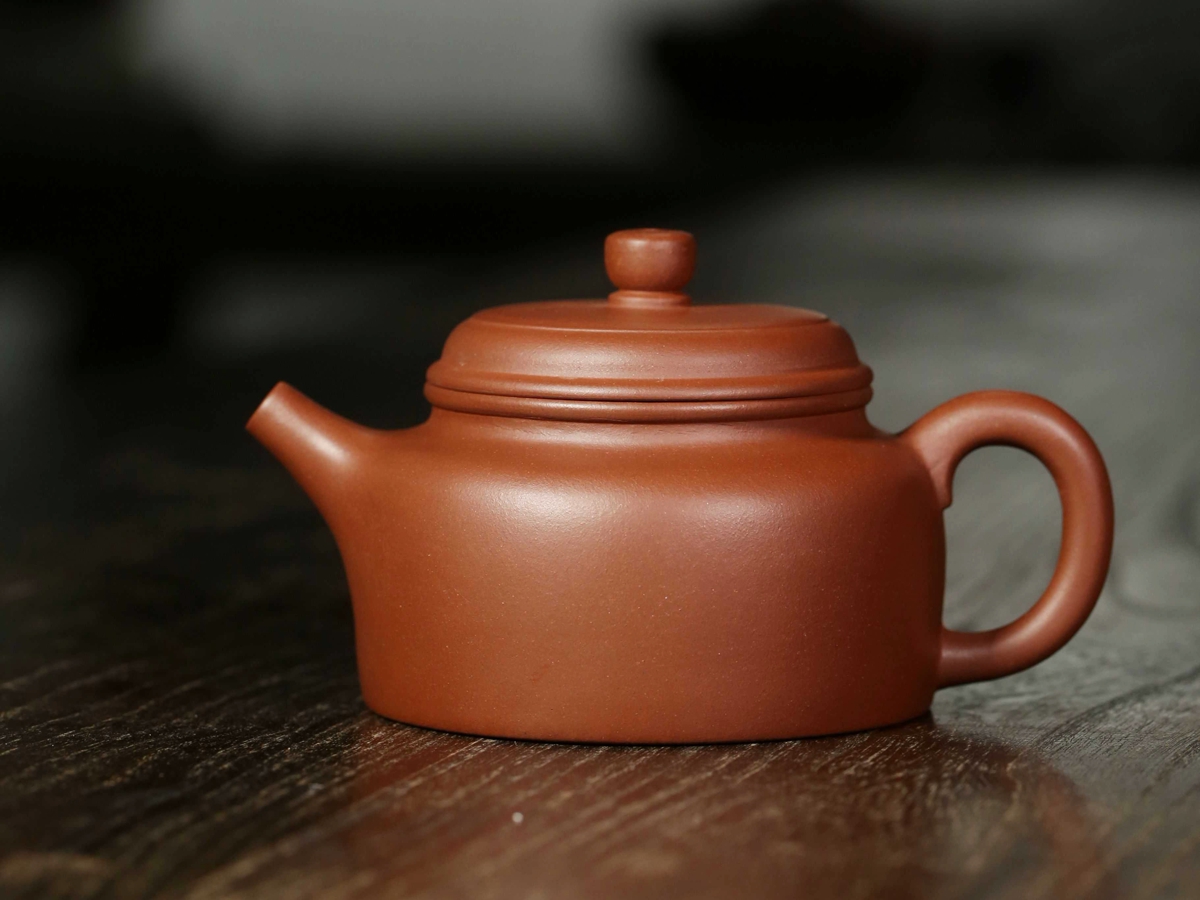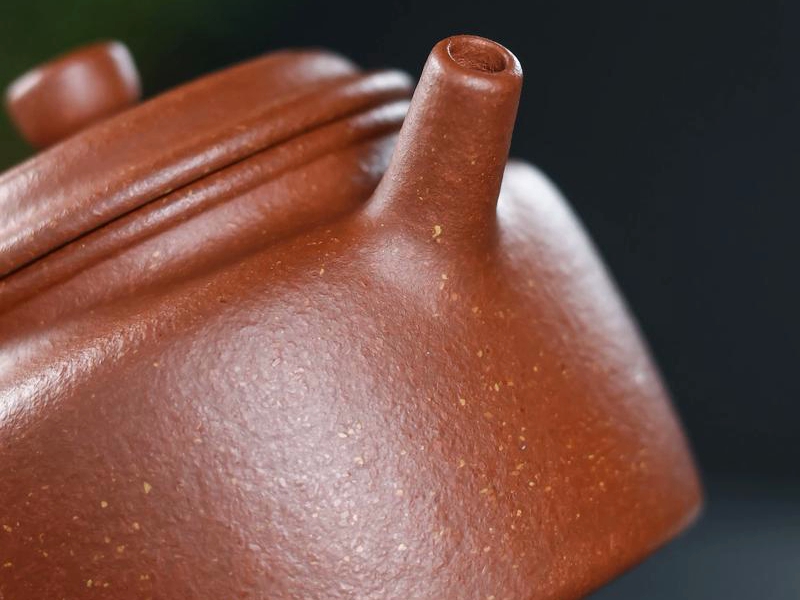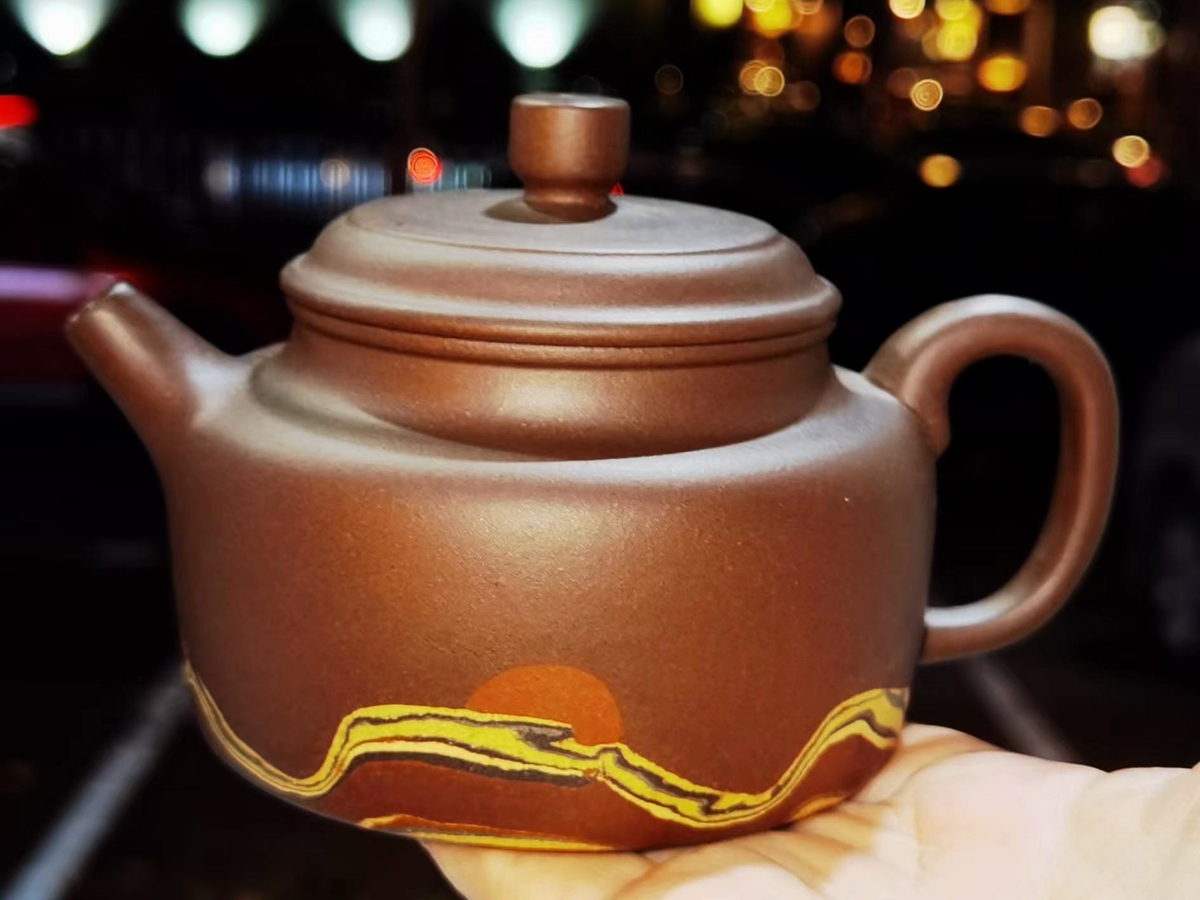Teapot Dezhong (德钟壶)
The Dezhong teapot, which can be translated as “beneficent bell,” is one of the classic forms of Yixing teapots. This shape gets its name from its unique bell-like architecture, and the character “德” (de) emphasizes its sophistication and symbolism of virtue, harmony, and respect for tradition.
History of the Dezhong Teapot
The Dezhong teapot (Chinese: 德钟壶, pinyin: Dé zhōng hú) was first created by master Shao Daheng (邵大亨, pinyin: Shào Dàhēng) during the Qing Dynasty (Chinese: 清朝, pinyin: Qīng Cháo), or Qing dynasty, was the last imperial dynasty of China, lasting from 1644 to 1912. The period was characterized by significant cultural, social, and political changes.
The Dezhong teapot, first created during this era, dates back to the period when Yixing pottery reached a high level of development, especially in the 18th and 19th centuries. It originally had a capacity of 450 ml, a height of 10 cm and a diameter of 9.6 cm. This master, known for his innovations in Yixing pottery, gave the teapot not only strict proportions but also functionality, making it an ideal choice for brewing tea.
Features of the Daezhong form
The shape of Dezhong is distinguished by its severity and laconicism, which gives it a special charm.
- Materials: The teapot is made of Yixing clay, most often azure clay (天青泥, pinyin Tiān qīng ní). This material, known for its excellent thermoregulatory properties, ensures optimal tea brewing. In dark purple tones, the shape of the teapot looks especially elegant.
- Details: The lid of the teapot is often decorated with elaborate elements, and the body may contain inscriptions in the kaishu style (traditional calligraphy style).
- Symmetry and proportions: The shape of the teapot is strict but harmonious, emphasizing the balance between beauty and utility.
Symbolism and cultural significance
The hieroglyph "德" in the teapot's name means virtue, love of music and art, and the ability to behave with dignity among people. The Dezhong teapot has become a symbol of these qualities, making it not just a utilitarian object, but also an object of aesthetic pleasure and philosophical reflection.
Application
- Traditional Tea Ceremony: Due to its functional and aesthetic qualities, the teapot is used in the traditional Chinese tea ceremony gongfu-cha, where precision brewing and respect for form play a key role.
- Collectibility: Dezhong teapots are a coveted item among collectors due to their historical value and unique design.
- Gifts: They are often given as a gift to symbolize respect and wishes for harmony.
Interesting facts
- Shao Daheng, the creator of this form, is one of the key figures in the history of Yixing ceramics. His works still serve as models for craftsmen.
- The azure clay used to create the teapot has unique properties - it preserves the aroma of tea and improves its taste.
- Despite the strictness of its form, the Dezhong teapot allows for various design variations, including decorative elements and carvings.
Combining tradition, aesthetics and functionality, the Dezhong teapot continues to be an important part of Chinese tea culture, symbolizing the connection between art and everyday life.
Role in cultural aspect
Dezhong teapots hold a special place in Chinese culture due to their aesthetic and symbolic significance. Their use in the tea ceremony emphasizes respect for tradition and the desire for harmony with nature. Teapots of this shape are often associated with the concept of “Zen”, which emphasizes simplicity, contemplation and inner peace. In addition, the Dezhong shape has inspired masters not only in ceramics, but also in other forms of art, including calligraphy and painting. In Chinese literature and philosophy, the teapot often symbolizes the unity of the material and spiritual.
Combining tradition, aesthetics and functionality, the Dezhong teapot continues to be an important part of Chinese tea culture. Its simple yet elegant form symbolizes the harmony between nature and man, and serves as a reminder of the value of simplicity and inner peace. More than just a vessel for brewing tea, this teapot is also a cultural artifact that reflects China’s rich heritage. Using the Dezhong teapot in everyday life and ceremonies helps maintain a connection with tradition and inspires contemplation and deep enjoyment of the moment.
- Comments
- Vkontakte








